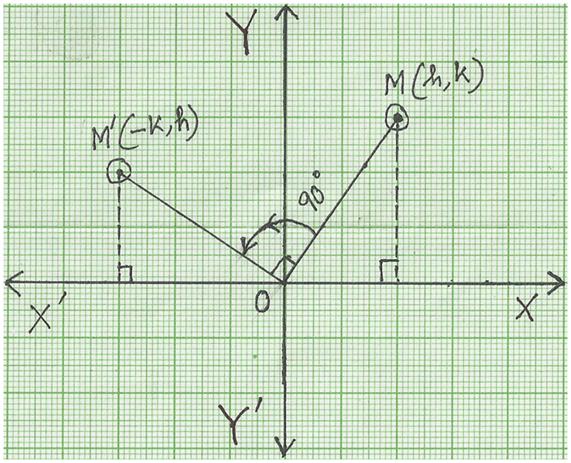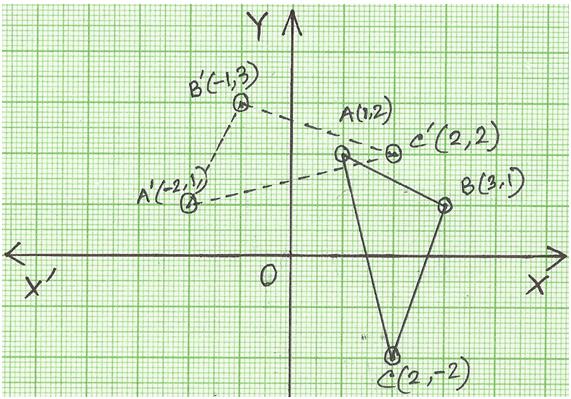Subscribe to our ▶️ YouTube channel 🔴 for the latest videos, updates, and tips.
90 Degree Anticlockwise Rotation
Learn about the rules for 90 degree anticlockwise rotation about the origin.
How do you rotate a figure 90 degrees in anticlockwise direction on a graph?
Rotation of point through 90° about the origin in anticlockwise direction when point M (h, k) is rotated about the origin O through 90° in anticlockwise direction. The new position of point M (h, k) will become M' (-k, h).
Worked-out examples on 90° anticlockwise rotation about the origin:
1. Find the new position of the following points when
rotated through 90° anticlockwise about the origin.
(i) A (2, 3)
(ii) B (-5, -7)
(iii) C (-6, 9)
(iv) D (4, -8)
Solution:
When rotated through 90° about the origin in anticlockwise direction. The new positions of the above points are:
(i) The new position of point A (2, 3) will become A' (-3, 2)
(ii) The new position of point B (-5, -7) will become B' (7, -5)
(iii) The new position of point C (-6, 9) will become C' (-9, -6)
(iv) The new position of point D (4, -8) will become D' (8, 4)
2. Draw a triangle ABC on the graph paper. The co-ordinate of A, B and C being A (1, 2), B (3, 1) and C (2, -2), find the new position when the triangle is rotated through 90° anticlockwise about the origin.
Solution:
Plot the points A (1, 2), B (3, 1) and C (2, -2) on the graph paper. Join AB, BC and Cato get a triangle. On rotating it through 90° about the origin in anticlockwise direction, the new position of the points are:
A (1, 2) will become A' (-2, 1)
B (3, 1) will become B' (-1, 3)
C (2, -2) will become C' (2, 2)
Thus, the new position of ∆ ABC is ∆ A'B'C'.
● Related Concepts
● Order of Rotational Symmetry
● Reflection of a Point in x-axis
● Reflection of a Point in y-axis
● Reflection of a point in origin
● Rotation
● 90 Degree Clockwise Rotation
7th Grade Math Problems
8th Grade Math Practice
From 90 Degree Anticlockwise Rotation to HOME PAGE
Didn't find what you were looking for? Or want to know more information about Math Only Math. Use this Google Search to find what you need.




New! Comments
Have your say about what you just read! Leave me a comment in the box below. Ask a Question or Answer a Question.